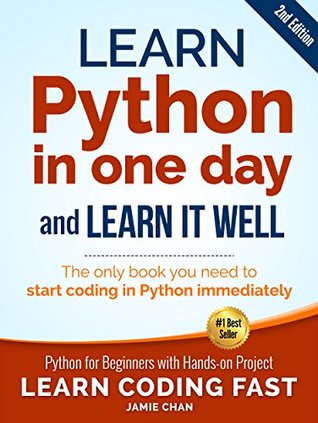More on this book
Community
Kindle Notes & Highlights
by
Jamie Chan
Read between
May 21 - May 22, 2019
What is Python? Python is a widely used high-level programming language created by Guido van Rossum in the late 1980s. The language places strong emphasis on code readability and simplicity, making it possible for programmers to develop applications rapidly.
There are a large number of high level programming languages available, such as C, C++, and Java.
If you learn one language well, you can easily learn a new language in a fraction of the time it took you to learn the first language.
One of the key features of Python is its simplicity, making it the ideal language for beginners to learn.
.py extension. This file is known as a Python script.
preassigned meanings in Python. These reserved words include words like print, input, if, while
variable names are case sensitive. username is not the same as userName.
= 0 has a different meaning from the = sign we learned in Math. In programming, the = sign is known as an assignment operator. It means we are assigning the value on the right side of the = sign to the variable on the left.
The notation 2:4 is known as a slice. Whenever we use the slice notation in Python, the item at the start index is always included, but the item at the end is always excluded.
In Python, an iterable refers to anything that can be looped over, such as a string, list, tuple or dictionary.
'r' mode: For reading only.
'r+' mode: For both reading and writing.
Binary files refer to any file that contains non-text, such as image or video files.
It is common practice to use PascalCasing when naming our classes. PascalCasing refers to the practice of capitalizing the first letter of each word, including the first word (e.g. ThisIsAClassName).
plus sign (+) can mean addition or concatenation. For instance, if we type 2+3 the + operator adds the two numbers to give us 5. However, if we type 'Hello' + ' World' the + operator concatenates the two strings to give us 'Hello World'.


